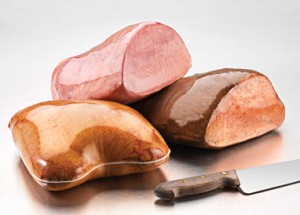Assess Food Packaging in Five Steps
January 12, 2016
By Ryan Till, Product Manager - Packaging Materials
 The right packaging can have a tremendous impact on profitability. Whether it’s ensuring the product looks great on shelves or preventing packaging failures during transport, missteps at any point in the process can spell disaster and negatively impact the bottom line.
The right packaging can have a tremendous impact on profitability. Whether it’s ensuring the product looks great on shelves or preventing packaging failures during transport, missteps at any point in the process can spell disaster and negatively impact the bottom line.
Here are five considerations for selecting the proper protein packaging.
Application
It’s tempting to think about packaging only as the final product. But finding the correct food packaging system means considering the entire packaging process. Does the protein start out raw or cooked? What happens to it during the packaging process? Is the production line set up for hand stuffing or machine packing? Keeping these factors in mind at the start not only helps to determine the best packaging solution for the product, but also clearly identifies packaging that should be avoided.
Function
Today’s packaging is specially engineered to perform in specific ways, like being semi-permeable or blocking out oxygen and moisture completely. Or perhaps the product requires forming, shrinking or printable packaging. Processors must first consider what the packaging is intended to do in order to make the right selection. Based on first understanding product needs, processors can properly select the right packaging that protects and displays the protein.
Sizing
Choosing the correct size packaging is a critical step in the process. Packaging that is too large is wasteful and not aesthetically pleasing. Packaging that is too small may impede product functionality. Food packaging bags or pouches of the wrong gauge (thickness) can accelerate spoilage, prevent adequate chilling or promote freezer burn, lose vacuum or interfere with proper sealing.
Barrier Concerns
Films and bags offer different levels of barrier properties meant to protect products against specific risks. Assessing the risks to products both before and after production should inform the packaging selection. Risk factors to consider include:
- Microorganisms
- Moisture passing out of or into product
- High cooking temperatures
- Oxidization
- Environmental contaminants
- Environmental abuse
Visual Appeal
While functional packaging should be the primary concern, processors cannot ignore the importance of using visual appealing food packaging. Cloudy films, discoloration and poor printing may leave a negative impression with consumers and have them reaching for a competitor’s product instead. For example, packaging proteins in high-barrier shrink bags protects and provides superior clarity and using decorative meat netting in vibrant colors or with distinctive patterns can help products stand out in retailers.
Evaluating all variables in the packaging process is a crucial to success. Taking these packaging considerations into account will allow processors to select the best food packaging solution for their products, improve efficiencies, minimize mistakes and reduce costs.
Download the FREE guide to learn more about selecting the best food packaging system for your products. Eight Ways to Cut High Costs and Shrinking Margins
